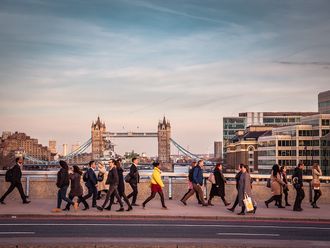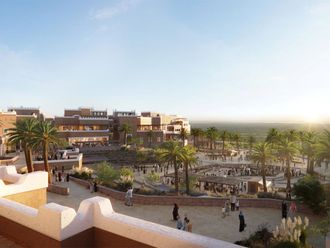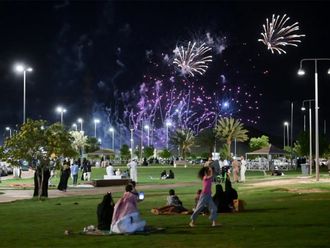The city's "grand" conference palace, set to open March 7, has been designed with visiting dignitaries in mind, its chief architect said.
The UAE's leaders had a vision to build a combination conference palace hotel worthy of foreign heads of states, said John Elliott, chief architect of the Emirates Palace, during an exchange with reporters.
"My brief from my clients was to provide a conference-hosting platform for the UAE," Elliott said. The Emirates Palace is the "first grand civic design" in the UAE and the Gulf, he said.
Elliott also referred to the Emirates Palace as a "guest palace" for the government. "We want people to be overpowered, we want them to say, 'wow' [when they see the structure]," he told reporters during a press tour of the Emirates Palace.
A visitor to the hotel resort will have to pay a Dh100 fee to enter (redeemable inside for any service along with a tour of the palace), hotel officials said.
The Emirates Palace hoped to host the GCC summit in 2004, but the event in the end did not take place in the UAE. The Emirates Palace was completed over three years. The firm responsible for the design and construction was London-based Wimberly Allison Tong & Goo (WATG).
WATG in turn signed contracts with other engineering and construction companies to help build the Emirates Palace, Elliott said. He is WATG's senior vice-president and executive director.
Elliott enjoys a long association with the UAE, having been Abu Dhabi's first town planner in the late 1960s.
"Having lived here in the past, I know the UAE well. I have tried to infuse the elusive Arabic cultural identity into the Emirates Palace structure," Elliott said.
The Emirates Palace is a gold and silver Arabian-style palace. It is decorated with domes, recessed openings, decorative motifs, arcades and terraces set off with cast and etched glass windows.
The gold finials over the domes are ceramic pieces coated with a thin film of real gold, said Elliott.
"There is no truth to the rumour the gold finials are entirely made of gold," Elliott said. No costs were spared to make this structure a guest palace fit for kings and heads of state, he said.












